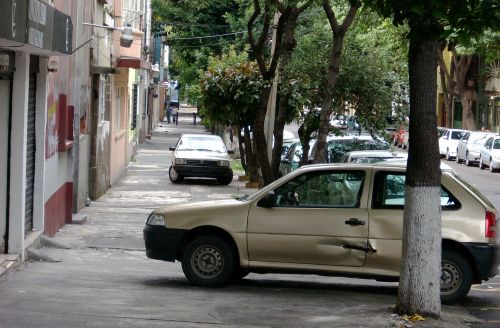
My first job in journalism was at a trade paper called Women’s Wear Daily, where the managing editor, Mort Sheinman, taught me some lessons that, all these years later, still stand me in good stead when I sit down to write a newspaper or magazine story.
One day Mort and I went out to lunch and he confessed to me that his dream job would be city editor – not at the newspaper, but literally walking around the streets of New York correcting all of the mistakes on street signs, on menus, on movie marquees and so on.
I thought he might be interested in the writing on the wall outside this store in the Colonia Roma Sur, which sells all sort of light bulbs and light fixtures. It would appear that they are selling some lamps with the brand name “Slime Line.” I’m assuming they are actually called “Slim Line.” But maybe they’re just dirty lamps. What do you think, Mort?





